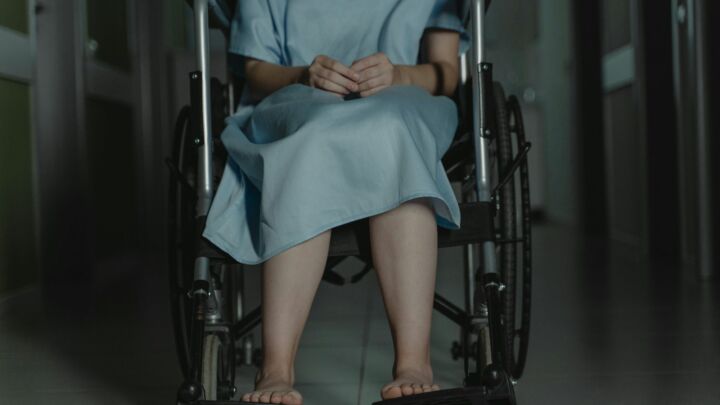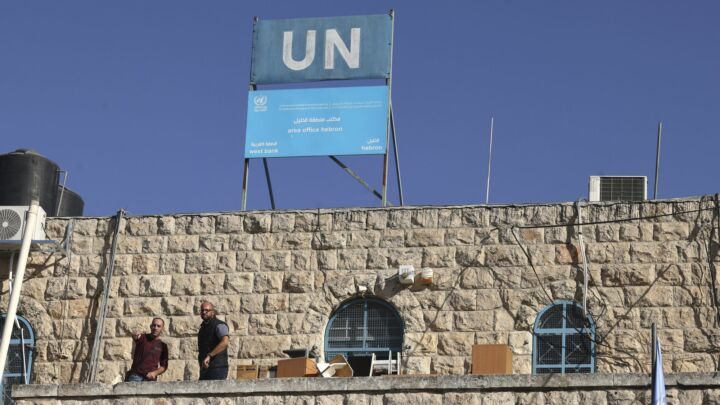An unlimited appetite for past obscenities
In the Irish elite, a voyeuristic preoccupation with clerical abuse coexists with reluctance to limit clerical influence in education and welfare.

Want to read spiked ad-free? Become a spiked supporter.
The report of the Ryan commission into the physical and sexual abuse of children in institutions run by religious orders in Ireland has so far provoked only pious apologies and token gestures (1).
It is 10 years since Mary Raftery exposed, in a series of television documentaries, the systematic brutality that prevailed in residential schools for the children of the poor in Ireland through most of the twentieth century. Her findings were comprehensively documented in Suffer the Little Children, co-written with Eoin O’Sullivan, an academic authority on the ‘industrial’ schools (2). The series provoked a public outcry and an official apology (the first of many) from the then Taoiseach Bertie Ahern – and the decision to appoint the commission of inquiry that finally reported last month. The main event of the intervening period was a deal (in 2002) between those largely responsible for the abuse – the Irish government and the religious orders – to limit the financial liability of the latter to compensation claims.
The unedifying combination of public breast-beating and private damage-limitation confirms the continuing bad faith of a society that turned a blind eye for decades to the abusive regime in the residential schools. As Raftery and O’Sullivan observed in 1999, for all the apologies from the religious orders, there was ‘scant evidence of contrition’, and even less of what the Catholic catechism describes as ‘a firm purpose of amendment’.
The orders continued to adopt a hostile and defensive posture towards the commission and stalled proceedings with legal actions. When it emerged that, as a result of the 2002 deal, the religious congregations would pay only 10 per cent of the anticipated €1.3billion compensation bill, the immediate response of the Conference of Religious of Ireland (CORI), representing 18 orders, was to refuse to review the deal. As Marx famously wrote of the Church of England, it would ‘more readily pardon an attack on 38 of its 39 articles, than on 1/39th of its income’ (3).
The Ryan report heard evidence from more than 1,000 men and women who had been confined as children to residential schools in the period between 1936 and 1970. Most were the children of poor parents who were deemed incapable of caring for them; some were children of unmarried mothers; a small proportion were orphans or had been convicted of criminal offences (usually below the age of 12). Virtually all witnesses had experienced hardship, drudgery and neglect – many complained of hunger. Some 90 per cent complained of physical abuse, around 50 per cent of sexual abuse (more commonly among boys than girls). In addition to confirming the systematic character of these abuses that was exposed by Raftery, the Ryan report provides further support for her repudiation of the justifications offered by the religious orders for their conduct of these schools.
Widespread violence
Some have objected that nuns and brothers are being judged by contemporary standards of childcare for their behaviour in an era when corporal punishment of children was widely accepted. The writings of John McGahern, among others, provide graphic accounts of the sort of brutality that was routinely experienced by children in Ireland in the 1930s and 1940s, both in the home and in the national schools (not generally administered by religious orders) (4). The Christian Brothers, the religious congregation most heavily involved in the industrial schools, had a fearsome reputation for the use of the cane and the strap and other instruments of punishment in day schools as well as residential institutions. Such methods only gradually fell into disuse from the 1970s onwards.
There can be little doubt from the consistency of witness testimonies that the use of violence was more extreme and more systematic in the residential schools than in the mainstream. It is clear that corporal punishment was used to intimidate and humiliate children as well as being used in random and unpredictable ways, fostering a climate of fear. The level of violence within the Irish education system reflected the social structure, being least experienced by middle-class children (especially girls) and most endured by poor children, who were perceived as a threat to the social and moral order.
Not an Irish problem?
Others object that the abuse of children was not peculiar to Ireland or to Catholic institutions. For example, Bryan Magee’s recent memoir of his childhood in London in the 1930s emphasises the prevalence of violence in every aspect of his life: at home, at school, in the wider community (without a nun or a brother in sight) (5). In Britain, sanctimonious critics of the Irish clergy seem to have forgotten similar revelations of abuse and neglect in residential facilities for people with mental illness and learning difficulties in the 1970s and 1980s (again, religious orders were not involved).
However, the history of the Irish industrial schools reveals the particular virulence of the abuse that came to prevail as part of the ‘carnival of reaction’ that followed the consolidation of the Irish Free State after Partition in 1921. While childcare policy in England evolved in a more enlightened direction, in Ireland the new government opted to continue to subcontract responsibility for childcare to the Catholic congregations. These had expanded rapidly in the late nineteenth century by adapting the coercive approach of Victorian England to the perceived menace of the children of the poor in Ireland.
The rigid hierarchy of the religious orders reflected the authoritarian and conservative character of Irish society. Only the lower-status congregations of brothers and nuns (inferior to ‘orders’ of priests engaged in parochial or missionary work) were involved in the industrial schools. These congregations absorbed the surplus labour of a backward rural society, reproducing its strict social divisions (the daughters of landless labourers became ‘lay nuns’, effectively domestic servants; the daughters of small farmers, who paid a ‘dowry’ to the convent, became ‘choir nuns’, playing professional and administrative roles). The industrial schools provided no useful education or training (another universal complaint) but turned out female workers for domestic service and male workers for farm labour (in which their exploitation and abuse often continued, even when they had escaped from the nuns and brothers). The boat to England often provided the only respite.
Bad apples?
Supporters of the religious orders are now prepared to acknowledge grievous instances of abuse (a few have even resulted in convictions), but insist that these are exceptional cases. They argue that the ill-repute of a few ‘bad apples’ should not be allowed to spoil the good name of the majority of selfless nuns and brothers who devoted their lives to the care of children. The most obvious objection to this defence is the sheer scale of the abuse, and the consistency of accounts from numerous different schools, run by different congregations, over several decades.
Raftery and O’Sullivan note that, while many witnesses told of nuns and brothers who did not beat them and even offered deeply appreciated acts of kindness, they ‘did not stand in the way of the often sadistic excesses of their fellow religious’. The ‘good’ nuns and brothers ‘never interfered with or protested about the activities of their more violent colleagues’. The authors attribute this failure to the deeply imbued culture of obedience in the religious orders, crushing individual conscience.
The ‘bad apple’ defence might carry more weight if the religious authorities had been more assiduous in dealing with known abusers in their own ranks. Both the Ryan report and the Raftery and O’Sullivan book provide detailed accounts of serial abusers who were simply moved around to different schools by the religious orders in response to complaints and allowed to carry on their activities, sometimes for decades.
Ignorance
Though the findings of the Ryan commission were widely received as shocking revelations, in substance the report contained little that was not already widely known. Indeed, as John Waters observes in a perceptive commentary in the Tablet, even the 1999 TV documentaries revealed ‘nothing that had not been known for decades’ (6).
Raftery and O’Sullivan detail a long line of whistleblowers going back to the 1940s, and a series of public scandals and complaints running through the 1950s and 1960s, culminating in the 1970 Kennedy report which issued a ‘scathing criticism of the industrial school system’. Yet the system continued, protected by the power of the state and the church and public denial. According to one newspaper editor, when it came to institutional abuse, journalists ‘allowed cowardice to rule’, and succumbed to ‘official evasion and ecclesiastical terror’. So familiar was the ill-treatment of children in residential schools that parents throughout Ireland could readily chastise naughty children with the spectre of banishment to the local industrial school.
Waters notes the ‘ritualistic expressions of shock, horror, disapproval’ that recur in response to periodic revelations about institutional abuse. The intensity of ostentatious outrage ‘becomes an almost precise replication of the earlier denial’. As he recognises, ‘it is not that the scales have been lifted from the eyes of society, but that, as a result of the easing, by the passing of time, of collective guilt and powerlessness, a new generation feels able to ventilate and excoriate the sins of its predecessors’. Waters warns against a ‘dangerous condescension to the past’, and the complacent contrast between contemporary enlightenment and the barbarous dark ages of mid-twentieth century Ireland. He detects in modern Ireland’s ‘unlimited appetites for past obscenities’ a worrying indifference to evils in our midst today.
Detailed accounts of the abuse in the industrial schools now provide a sort of pornography for Ireland’s chattering classes in a way similar to the Baby P case in Britain. A voyeuristic preoccupation with clerical abuse coexists with a pusillanimous reluctance to take any action to limit clerical influence in education and social welfare. Ireland’s new ‘Hibernian cosmopolitan’ elite may be less devout and less deferential to the Catholic Church than the founding fathers of the Free State, but it is still not ready to take decisive action against the religious orders (7).
Though most members of religious congregations are now elderly and few are now actively engaged in teaching or social work, the orders retain control of a number of educational institutions and a substantial property portfolio. With their egregious past record and their continuing parsimony towards their victims, these religious congregations have forfeited any right to administer schools in Ireland. Though the Irish government has a poor record too in this area, it is at least formally accountable to the people and now has a duty to take over these orders’ property and remove them from the education system.
The Ryan report emphasises the enduring effects of the experiences of child abuse on many who testified before the commission. No doubt many have found that their childhood deprivations paved the way for lives blighted by homelessness and unemployment, alcohol dependency and mental health problems. Yet, while witnesses to institutional child abuse are at some risk of becoming the targets of a new generation of therapeutic entrepreneurs – counsellors, social workers, psychologists – many also emerged from these grim childhoods to live fulfilled lives. The autobiographies of McGahern and Magee are a valuable counter to the fatalism that now attends discussions of child abuse. Both are deeply moving accounts of childhood trauma and neglect. Both are also accounts, not of ‘survival’ – the highest aspiration of the contemporary culture of abuse – but of transcendence.
Michael Fitzpatrick is the author most recently of Defeating Autism: A Damaging Delusion (buy this book from Amazon(UK)).
Josie Appleton saw the paedophile panic as a metaphor for mistrust. Mick Hume called for an end to the unhealthy obsession with child sexual abuse. Frank Furedi read some ‘misery memoirs’ and concluded they are a voyeur’s wet dream. Michael Fitzpatrick considered the future of Catholicism after John Paul II. Or read more at spiked issue Risk.
(1) The Ryan Report
(2) Mary Raftery, Eoin O’Sullivan, Suffer The Little Children: The Inside Story of Ireland’s Industrial Schools, New Island, 1999
(3) K. Marx, Capital, Volume One, preface to the 1867 edition, p21.
(4) McGahern J. Memoir. London: Faber, 2005.
(5) Magee B. Clouds of Glory: A Hoxton Childhood. London: Jonathan Cape, 2004.
(6) John Waters. In denial then, in denial now, Tablet, 30 May 2009
(7) David McWilliams. The Pope’s Children, Pan 2007
Celebrate 25 years of spiked!
A media ecosystem dominated by a handful of billionaire owners, bad actors spreading disinformation online and the rich and powerful trying to stop us publishing stories. But we have you on our side. help to fund our journalism and those who choose All-access digital enjoy exclusive extras:
- Unlimited articles in our app and ad-free reading on all devices
- Exclusive newsletter and far fewer asks for support
- Full access to the Guardian Feast app
If you can, please support us on a monthly basis and make a big impact in support of open, independent journalism. Thank you.






Comments
Want to join the conversation?
Only spiked supporters and patrons, who donate regularly to us, can comment on our articles.